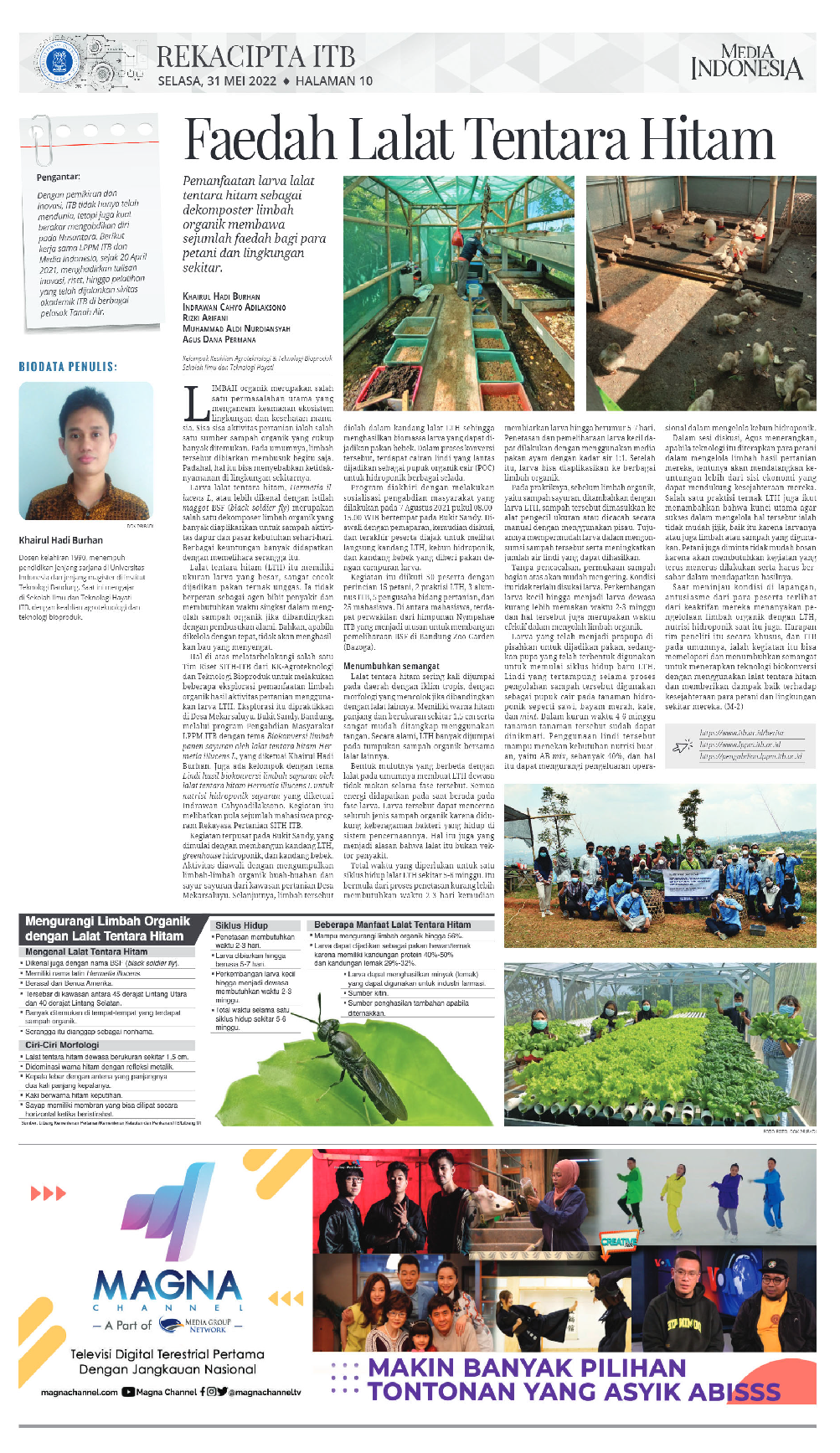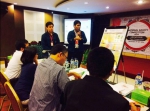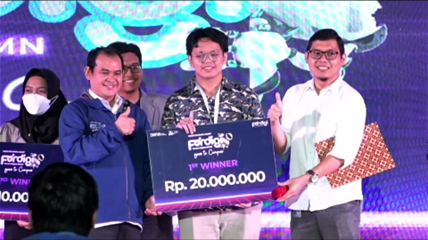SITH ITB Community Service Team Utilizes Black Soldier Flies for Organic Waste Treatment
By Adi Permana
Editor Adi Permana

*Photo source: research gate
BANDUNG, itb.ac.id—Through the Pengabdian Masyarakat LPPM ITB program, Research Team SITH ITB from the Agrotechnology and Bioproduct Technology Research Group explored the usage of organic waste from agricultural activities in Mekarsaluyu Village, Bukit Sandy, Bandung. This community service was titled as “Bioconversion of Harvested Vegetable Waste by Black Soldier Flies (Hermentia illucens L.)” which was led by Khairul Hadi Burhan, S.T., M.T., and “Leachate from Bioconversion of Vegetable Waste by Black Soldier Flies (Hermentia illucens L.) for Nutrition of Hydroponic Vegetables” which was led by Indrawan Cahyoadilaksono, S.T., M.Ag.Sc., involving several SITH ITB Agricultural Engineering students.
Agricultural activity is one of the major sources of large organic waste. If not managed, decaying organic waste may cause discomfort to the surrounding environment, as well as become a vector of various diseases that may possibly threaten human health. In order to help the decomposition process of organic waste and turn it into fertilizer, natural decomposers are needed.

*This service was published in the Rekacipta Media Indonesia rubric edition for May 31, 2022.
Read the full article: Benefits of Black Soldier Flies
The larvae of the black soldier fly (Hermetia illucens L.), also known as the maggot Black Soldier Fly (BSF), is one of the organic waste decomposers that is often found in tropical climates. In addition to BSF meeting their energy needs during the larval stage and will not eat in the adult phase, BSF also does not have a role as an agent of pathogens. The processing of organic waste using BSF can be done in a short time and smells less in comparison to natural decay.
One BSF fly cycle is about 5-6 weeks. After hatching, the small larvae can be fed chicken feed with a moisture content of 1:1, then it can be applied to organic waste that has been chopped into smaller pieces. Organic waste is chopped so that the larvae would consume the waste more easily, thereby producing more leachate. The development of small larvae to large larvae takes about 2-3 weeks, which is also an effective time to treat organic waste.
The LTH’s new life cycle is regenerated by the formation of pupae by the larvae, while the larvae that have turned to prepupae are used as food. After that, the collected leachate can be used as liquid fertilizer for hydroponic plants. The use of leachate can reduce operational expenses in hydroponic garden management since it can reduce the need for a mix of AB nutrients by as big as 40%.
The activity started by building a BSF cage, a hydroponic greenhouse, and a duck cage. Waste treatment began by collecting organic waste in the form of fruits and vegetables from agricultural areas, and then processed with BSF to produce leachate and BSF larvae biomass, which can be used as duck feed.
In the discussion regarding the socialization of the conducted community service, Dr. Agus stated that if this technology is applied, it will certainly provide more benefits on the economic side. One practitioner added that the main key to managing organic waste is not to be easily disgusted by the larvae or the waste, to not be easily bored, and to always be patient in the process until you get the desired result.
It is hoped that activity can be a pioneer and grow enthusiasm in the application of bioconversion technology with the help of BSF, and can also give a good impact towards the environmental welfare among farmers.
Reporter: Najma Shafiya (Postharvest Technology, 2020)
Translator: Hanna Daniela Ayu (Aerospace Engineering, 2021)

.jpg)
.jpg)

.jpg)
.jpg)

.jpg)

